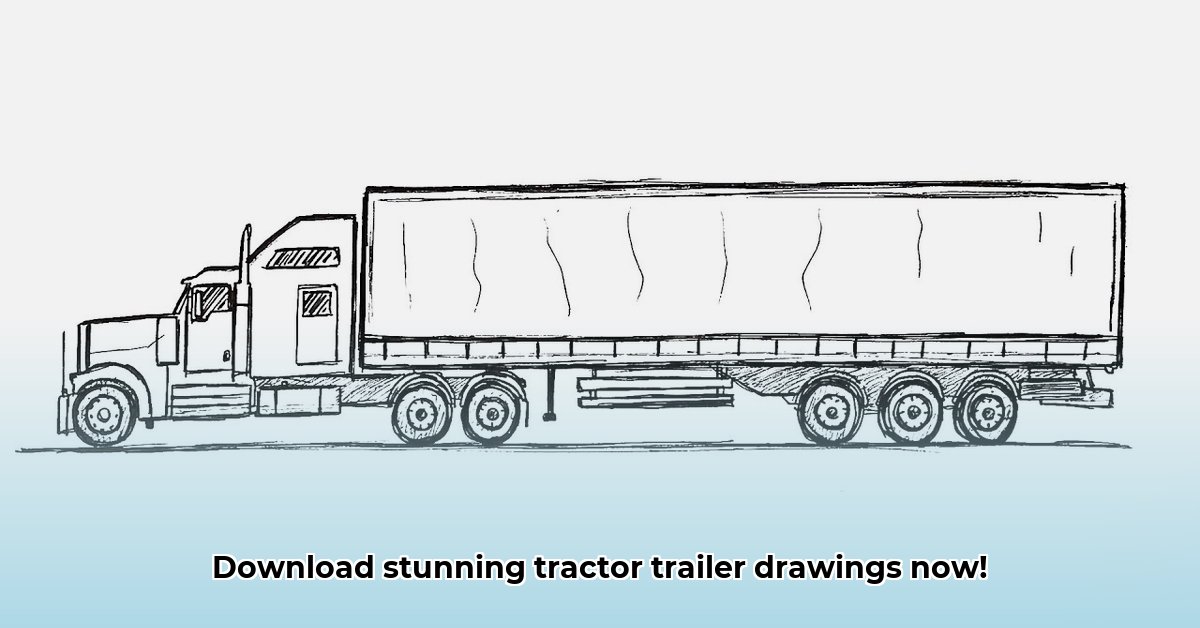
The Expanding Market for Tractor-Trailer Vector Graphics
The digital marketplace boasts a vast and growing collection of tractor-trailer illustrations, ranging from simple line art to photorealistic vector graphics. This abundance presents both significant opportunities and considerable challenges for artists, businesses, and anyone seeking high-quality trucking imagery. This analysis delves into the market dynamics, highlighting key trends and actionable insights for various stakeholders. What are the major opportunities and pitfalls in this burgeoning sector? Let's explore. For more tractor images, check out this helpful resource.
Market Saturation and the Copyright Challenge
The sheer volume of available tractor-trailer graphics presents a significant hurdle: copyright infringement. The difficulty lies in distinguishing original artwork from derivative works, especially given the often-subtle variations between similar images. This lack of clear, consistent labeling further complicates the process of identifying truly original and legally usable assets. How can we effectively navigate this complex landscape to avoid legal pitfalls? The answer lies in understanding niche opportunities and leveraging the advantages of vector formats.
Niche Opportunities: Specialization and Innovation
While market saturation poses challenges, focusing on niche areas offers a path to success. Specializing in specific trailer types (e.g., tanker trucks, refrigerated trailers), sustainable trucking visuals (e.g., electric or hybrid trucks), or highly stylized designs for branding creates a competitive edge. The scalability of vector formats (EPS, AI, SVG) further enhances this advantage, allowing for seamless adaptation across diverse applications, from tiny website icons to large-scale billboard designs.
The Technical Advantage of Vector Graphics
Vector graphics, unlike raster images, maintain their quality regardless of size. This scalability is crucial for businesses needing consistent branding across various platforms. Their flexibility extends to animation and print media, making them an invaluable asset across diverse applications which are increasing in demand. How many more clients need this scalable format? The market is only bound to grow.
Future Trends: AI, NFTs, and the Evolving Landscape
The integration of artificial intelligence (AI) in image generation is transforming the market. AI tools can automate aspects of the design process and potentially create novel artistic styles. However, this raises crucial legal questions surrounding copyright ownership. The increasing adoption of non-fungible tokens (NFTs) for licensing digital art further complicates this landscape, posing both opportunities and challenges for artists and businesses alike. What innovative solutions will help navigate these uncertainties?
Actionable Insights for Key Stakeholders
This market presents distinct opportunities for various stakeholders, including:
1. Graphic Designers: Specialize in niche areas; leverage AI tools to enhance efficiency and creativity; explore NFT licensing opportunities to establish direct control over their assets.
2. Trucking Companies: Invest in custom-designed branding; use high-quality images to enhance marketing materials across all platforms for brand consistency.
3. Educational Institutions: Utilize royalty-free images for educational materials; collaborate with designers on collaborative projects and establish open-source libraries of trucking-related graphics.
4. Software Developers: Develop advanced search tools for image databases; create AI-powered design tools; contribute to establishing industry standards and metadata for improved organization and searchability of the expansive market.
"The future of this market depends on adaptable individuals and businesses," says Dr. Anya Sharma, Professor of Digital Media at the University of California, Berkeley. "Those who leverage AI responsibly and embrace the potential of NFT licensing will shape the future of trucking imagery."
Navigating Copyright: A Practical Guide
The abundance of images highlights the critical need to understand and avoid copyright infringement. The following steps are crucial for safe and legal use:
- Verify Licensing: Always confirm licensing terms before using any image. This establishes legal use from the outset.
- Seek Permission: If unsure about licensing, contact the copyright holder directly for explicit permission.
- Create Originals: The safest approach remains creating original designs to eliminate copyright concerns.
- Transformative Use: Understanding the concept of transformative use (a legal defense in copyright disputes) is crucial, though it may be insufficient without other measures.
- Stay Informed: Keep abreast of evolving legal norms and technological trends.
By adhering to these guidelines, businesses and artists can mitigate risks and harness the opportunities presented by the ever-expanding market for tractor-trailer vector graphics. The future of this dynamic sector holds immense potential, with innovative technologies and legal frameworks shaping the landscape.